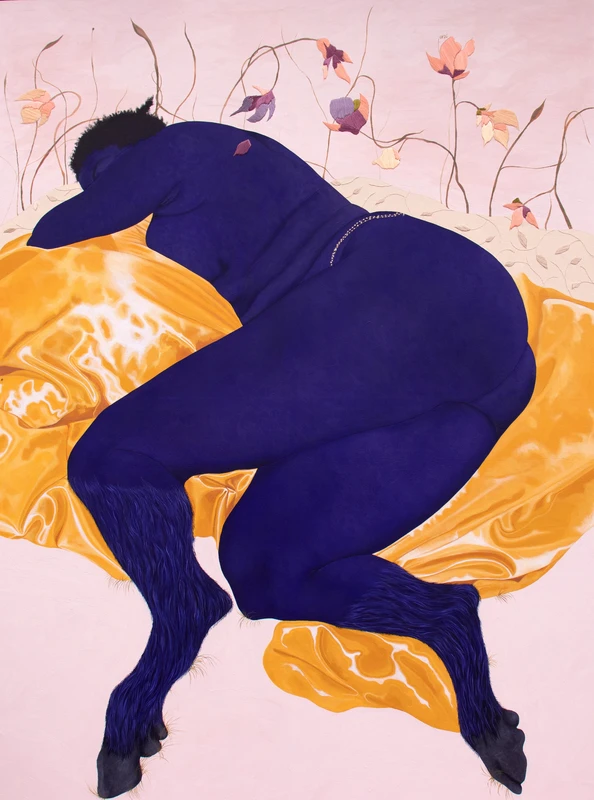Stacey Gillian Abe: The Garden of Blue Whispers
3 Dec 2025-31 Jan 2026


While Shrublet of Old Ayivu discussed shared memories, this new body of work extends that conversation into how our senses – touch, sound, scent, and sight – can hold onto memories long after their season has passed.
Recalling time spent in her home village during Uganda’s dry seasons, the works are inspired by the shift from the final days of parched heat and the first, tender rains that follow. Hot winds carry dust across the West Nile region; the sound of crickets and grasshoppers heralding the rains; the scent of the earth awakens under the falling water – these sensory phenomena are all threads woven into this collection.
Embroidery, a recurring motif throughout the exhibition, serves as both a gesture of femininity and a vessel of inheritance. Traditionally practiced by women and passed through maternal lines, embroidery here becomes a symbolic act of continuity. Abe learned the craft from her mother, who learned it from hers, and so on. Their lineage is stitched across generations. By delicately hand-stitching silk thread directly onto the canvas, the artist transforms this domestic ritual into a meditative dialogue on the position of the Black woman’s body within painterly space. The canvas becomes a site of refuge — an imagined garden — where her figures can exist freely, unbound by the world’s constraints.
Indigo, the definitive hue of Abe’s oeuvre, plays a vital role in this reimagined landscape. Once a material that defined and confined the Black body through trade and labor, here it is reclaimed and reinterpreted. For Abe, indigo signifies a new tribe — a “breed of Black” that transcends social, cultural, and historical boundaries. Through its depth and resonance, the colour becomes both skin and soil, grounding her figures in a shared lineage while allowing them to flourish beyond it.
At its heart, The Garden of Blue Whispers is also a love letter to the artist’s late grandmother – a remembrance and a longing for an invitation that can no longer be received. What remains are the traces of her presence: familiar scents, sounds, and tastes suspended in memory, echoes of love preserved beyond their season.
In The Garden of Blue Whispers, memory breathes through matter: soil, fabric, and pigment converge in a quiet act of renewal. The works invite viewers to linger in that liminal space between seasons—to listen closely, and perhaps, to hear the whispers of time and land themselves.